The Inca Trail is one of the oldest and most famous routes in the world, known for leading to the breathtaking city of Machu Picchu. With stunning Andean landscapes, challenging trails, and archaeological sites filled with history, it’s an exciting journey that will awaken all your senses. If you’re planning to visit Cusco, this is an adventure you can’t miss.
However, it’s essential to keep a few things in mind to avoid surprises along the way and make the most of your trip. From organizing your journey to knowing what to expect on the trail, there are several key elements that can make all the difference.
In this article, we share the best tips to ensure your adventure on the Inca Trail is safe, comfortable, and unforgettable. The last one is the most important!
Get ready to follow in the footsteps of the Incas.
- What is the Inca Trail?
- What You Need to Know Before Trekking the Inca Trail
- 1. Book in Advance
- 2. The Best Time to Hike the Inca Trail
- 3. You Can’t Travel on Your Own
- 4. There Are Several Trekking Options
- 5. The Route is Challenging
- 6. The Inca Trail with or without Kids
- 7. Comfort on the Trail
- 8. Packing List for the Inca Trail
- 9. Respect the Environment
- 10. The Most Important Thing on the Inca Trail: Enjoy to the Fullest!
- You May Also Be Interested In:
What is the Inca Trail?
Peru is a country with a rich history where, over the years, many civilizations have contributed to shaping the identity of the Peruvian people. But there was one that stood out and became one of the most important in all of America: the Inca Empire.
The Incas possessed great intelligence and the ability to adopt knowledge from different peoples. They were remarkable engineers and farmers, capable of developing innovative techniques that still impress us today.
They established their capital in the city of Cusco, but their empire stretched from southern Colombia to central Chile and northwest Argentina. They connected these territories through roads that crossed mountains, forests, and jungles, known as Qhapaq Ñan or the Andean Road System. This network of roads covers around 2 million square kilometers across all types of terrain, and in 2014, it was declared a World Heritage Site by UNESCO (United Nations Educational, Scientific and Cultural Organization).

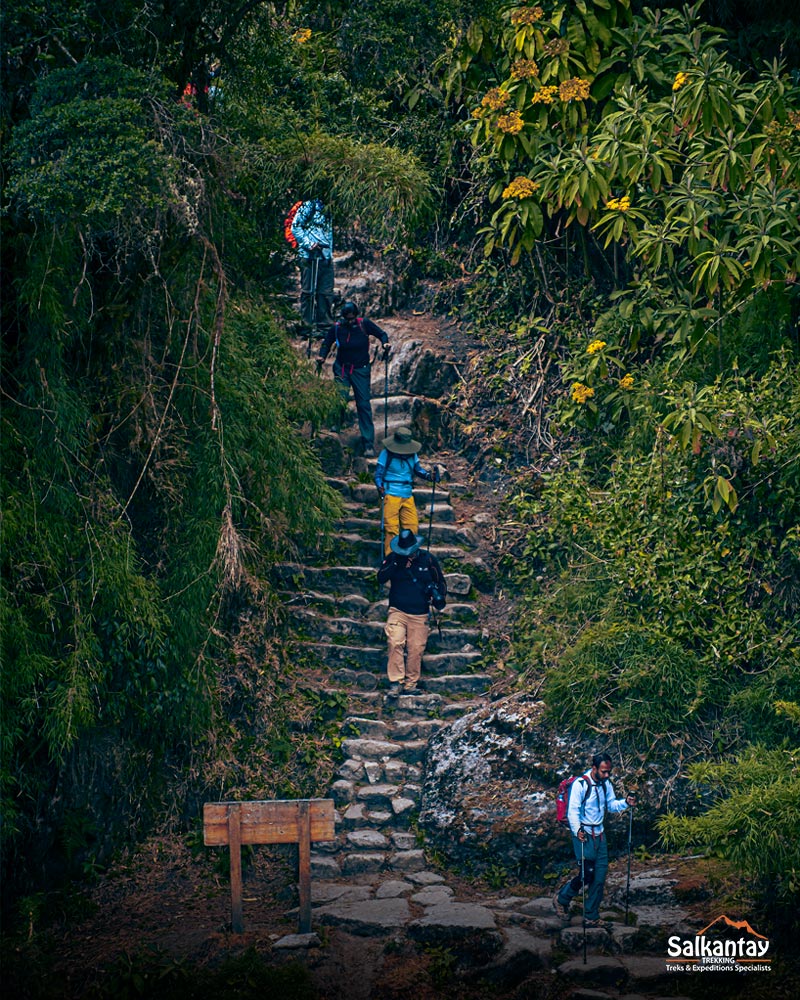
The historical significance of the Inca Trail makes it truly unique and special. You’ll hike a total of 42 km along this ancient network of roads, passing through impressive archaeological sites before reaching Machu Picchu:
- Llactapata (2,840 m / 9,318 ft) – An agricultural center with terraces and building remains, possibly a supply point.
- Runkurakay (3,760 m / 12,336 ft) – A small semicircular structure that served as an Inca checkpoint.
- Sayacmarca (3,600 m / 11,811 ft) – An impressive complex built on a cliffside, featuring narrow streets and a panoramic viewpoint.
- Phuyupatamarca (3,650 m / 11,975 ft) – Known as the “City Above the Clouds,” it features ceremonial fountains and agricultural terraces.
- Wiñay Wayna (2,650 m / 8,694 ft) – A stunning site with terraces, temples, and water channels carved into the mountainside.
- Inti Punku (2,720 m / 8,924 ft) – The ancient gateway to Machu Picchu, where hikers get their first breathtaking view of the citadel.
The highest and most challenging point is Warmiwañusca Pass (4,215 m / 13,828 ft), offering spectacular views of the Andes before the descent into the cloud forest.
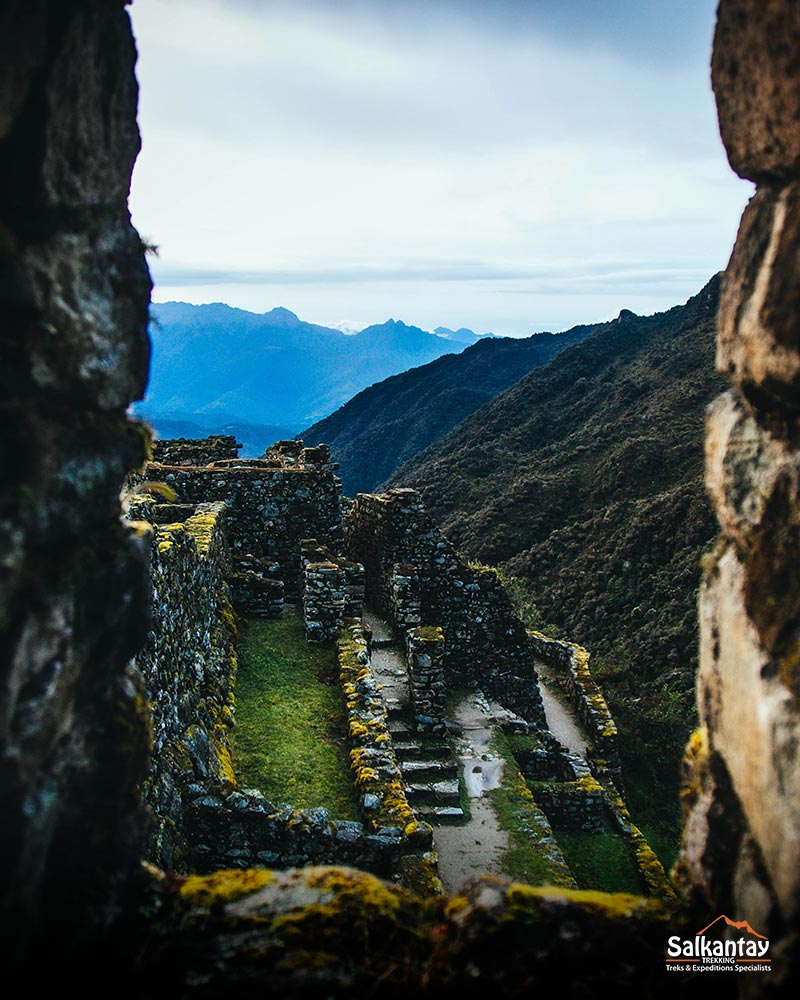
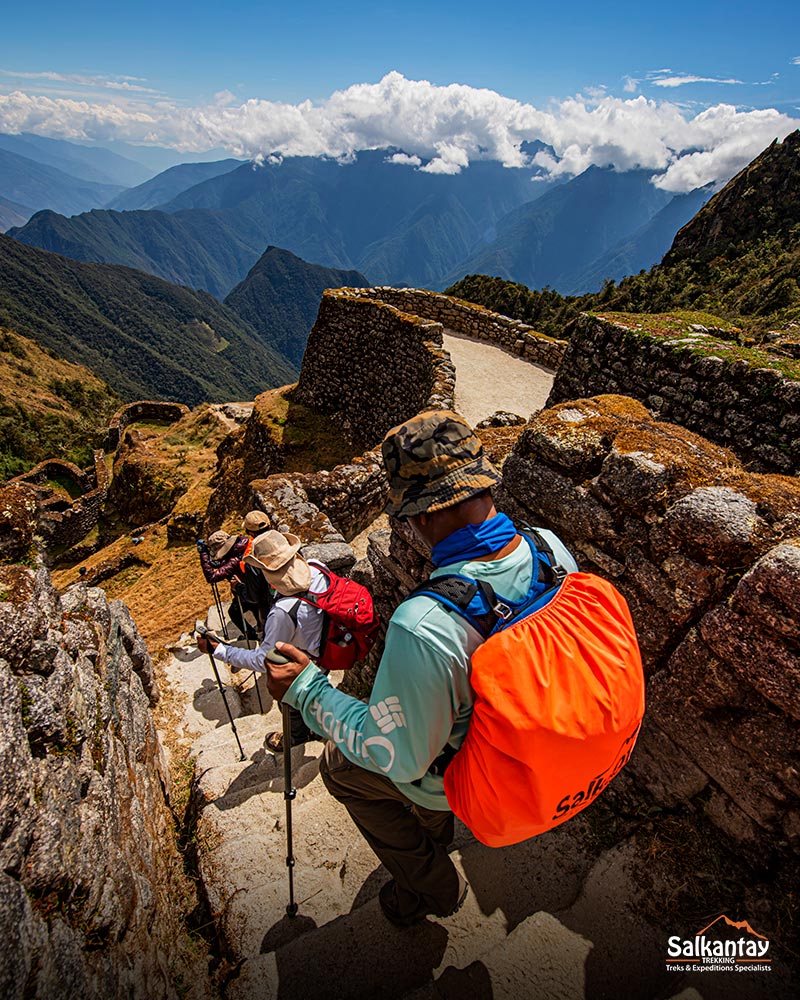
As you can see, the Inca Trail is a challenging journey with constant altitude changes, demanding ascents, steep descents, and narrow trails that will test your endurance. Along the way, you’ll also experience climate variations, from the cold of the highlands to the humidity of the jungle, and immerse yourself in a wild environment surrounded by mountains, cloud forests, and rivers.
That’s why being well-prepared is essential to fully enjoy this incredible adventure. Join us to discover this treasure!
What You Need to Know Before Trekking the Inca Trail
1. Book in Advance
Being one of the best hiking routes in Peru and the world, the Inca Trail is in high demand. Thousands of tourists want to do this trek, but since it’s an area of great historical and scenic importance, the Peruvian government decided to protect the territory to ensure its conservation. For this reason, there is a limited number of visitors.
Only 500 people are allowed to enter per day, including the support team on the route: guides, cooks, and porters. This leaves a capacity of 200 spaces reserved exclusively for tourists. This access is highly demanded, especially during the high season (May to September), so it’s recommended to book at least 5 or 6 months in advance.
- DON’T MISS OUT! Permits are granted in the order of request and tend to sell out quickly, especially during the peak months like June, July, August, and even September.

2. The Best Time to Hike the Inca Trail
The best time to hike the Inca Trail to Machu Picchu is from April to October, during the dry season. During these months, the weather is more pleasant, with less rain and sunnier days, giving you the chance to explore the incredible natural landscape of the Andes.
If rainfall isn’t a problem for you, the rainy season, from November to March, can also offer a unique and less crowded experience. However, due to the tropical climate, rain can occur at any time of the year and any moment of the day. It’s essential to be prepared for sudden changes between sun and rain by carrying a poncho or a waterproof jacket. Don’t forget to bring insect repellent and sunscreen, as the weather is warm and mosquitoes are plentiful.
- Plan your trip wisely! Remember that the Inca Trail closes in February for maintenance and rest due to the heavy rainy season. This period may even be extended for a few weeks if the rains persist.
But don’t worry… Machu Picchu remains open! There are other equally impressive tours that will also take you to the legendary fortress.
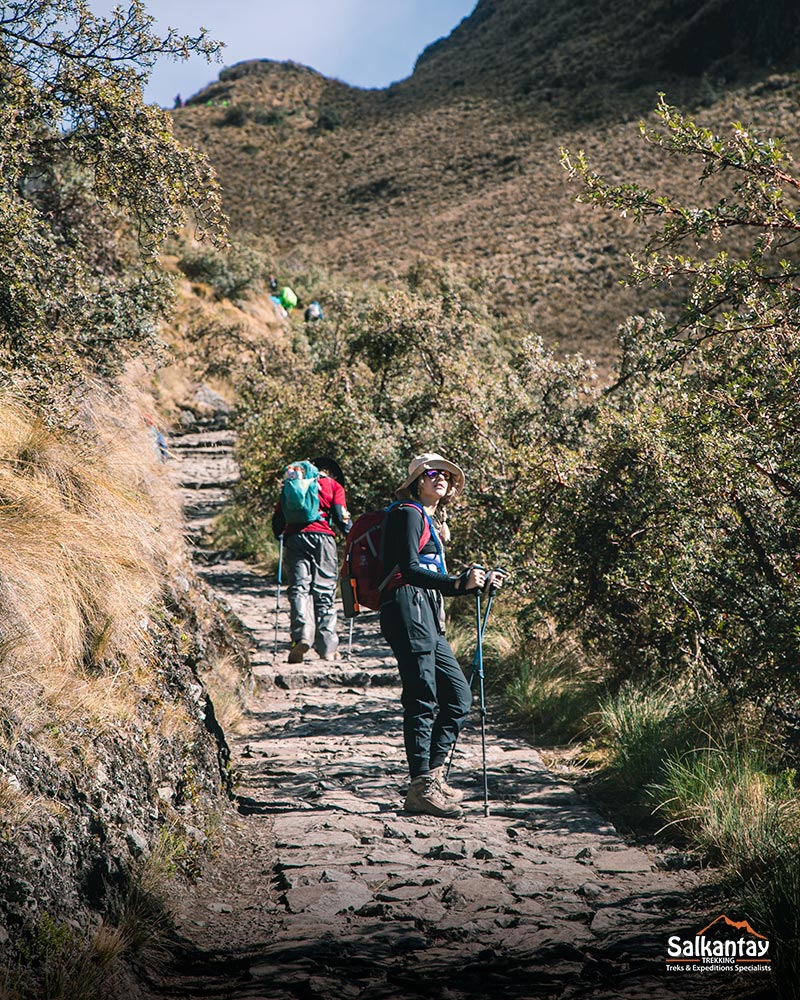
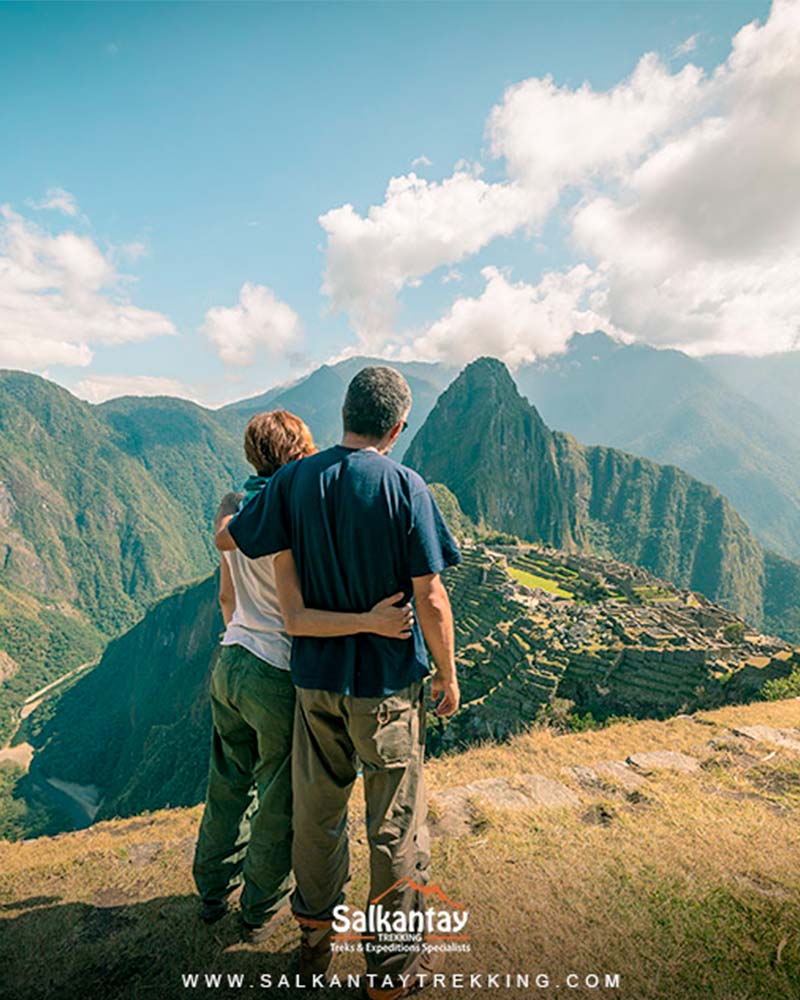
3. You Can’t Travel on Your Own
The Inca Trail is a regulated route, and to experience one of the best treks in South America, you must do it with a certified travel agency that follows all regulations. Agencies are the only ones with the necessary permits to enter the trail, so we recommend choosing a reliable travel company.
There are several local and international agencies that offer the Inca Trail, but you must be very careful to choose an official one. In Cusco, there are countless businesses providing this service, though not all are safe. That’s why we recommend researching which agencies are authorized to ensure your journey is legal and problem-free.
At Salkantay Trekking, we are licensed to operate the famous Inca Trail to Machu Picchu and offer a wide variety of packages tailored to your interests and preferences. We take pride in strictly complying with porter regulations, ensuring we respect the exact weight they can carry (5 kg). While providing high-quality service, we always guarantee the necessary safety measures so that our team works optimally throughout the entire route.
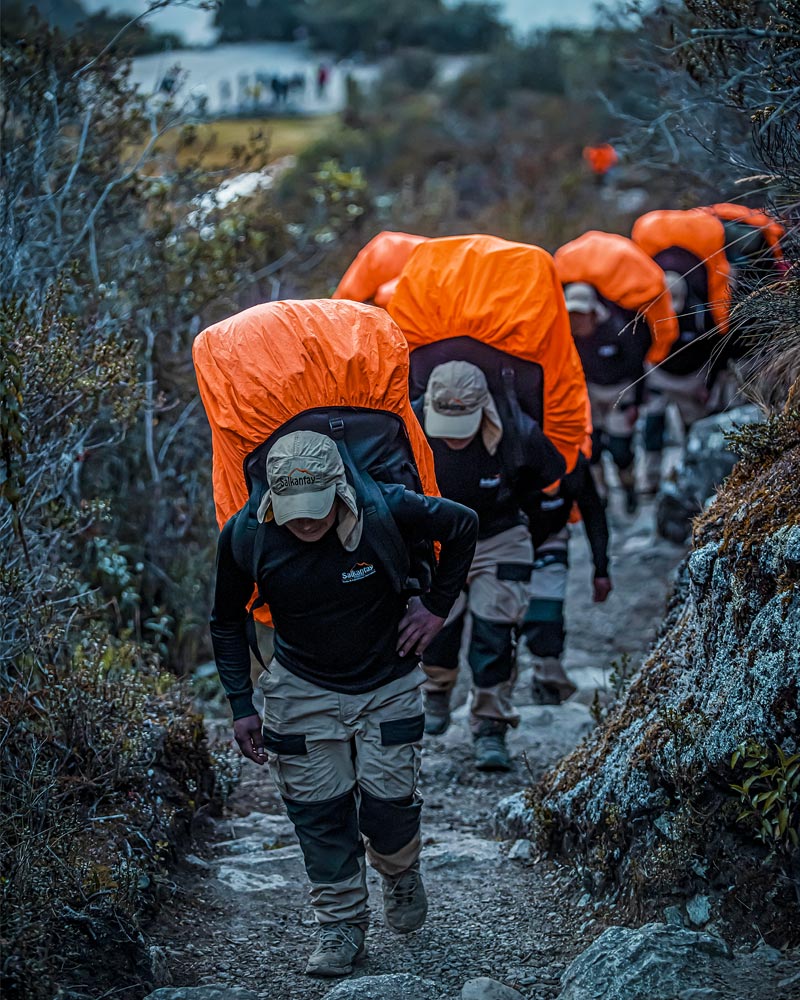
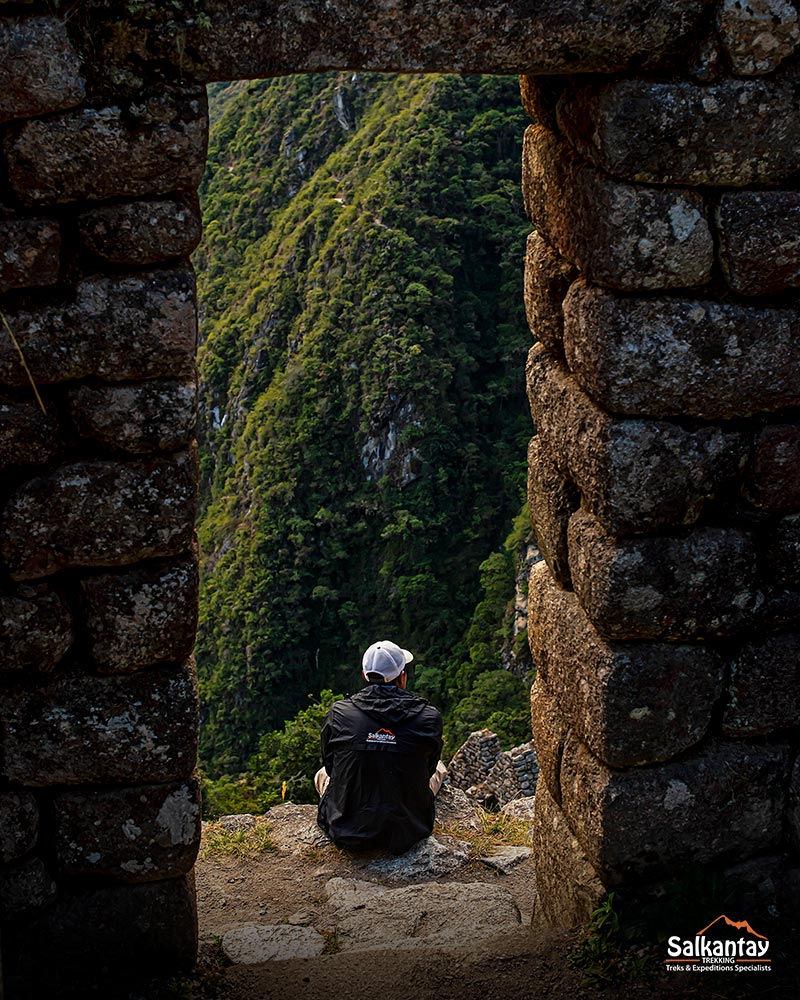
4. There Are Several Trekking Options
It’s possible to hike the Inca Trail in as little as 2 days or take up to a week, depending on how much time you have during your trip. Discover all the options!
- Short Inca Trail: If you don’t have much time in Cusco, this 2-day route is ideal for you. On the first day, you’ll hike part of the Inca Trail to reach Machu Picchu through the Sun Gate, and on the second day, you’ll explore the entire citadel.
- Classic Inca Trail: This is the most well-known option. Starting near Cusco at km 82 in Ollantaytambo, you’ll follow the entire trail created by the Incas until you reach the Machu Picchu fortress after a 4-day trek.
- Salkantay Trek & Short Inca Trail: The best hikes in Cusco combined into one adventure. This unique 6-day trek takes you through the most stunning mountain landscapes of the Andes while you rest in our exclusive and comfortable campsites. In the final days, you’ll hike a short section of the Inca Trail to Machu Picchu.
- Salkantay Trek & Classic Inca Trail: The best of both worlds. You’ll admire the beauty of Humantay Lake, ascend the imposing Salkantay Pass, and hike the entire Inca Trail in a complete 7-day adventure.
- Lares Trek & Short Inca Trail: A perfect combination of culture and adventure, where you’ll visit rural Andean communities, relax in hot springs, and enter Machu Picchu through the Sun Gate (Inti Punku).
- Ancascocha & Inca Trail: A lesser-known trail that passes by lagoons and waterfalls before connecting to the final stretch of the Inca Trail. Ideal for those seeking a more remote and authentic experience.
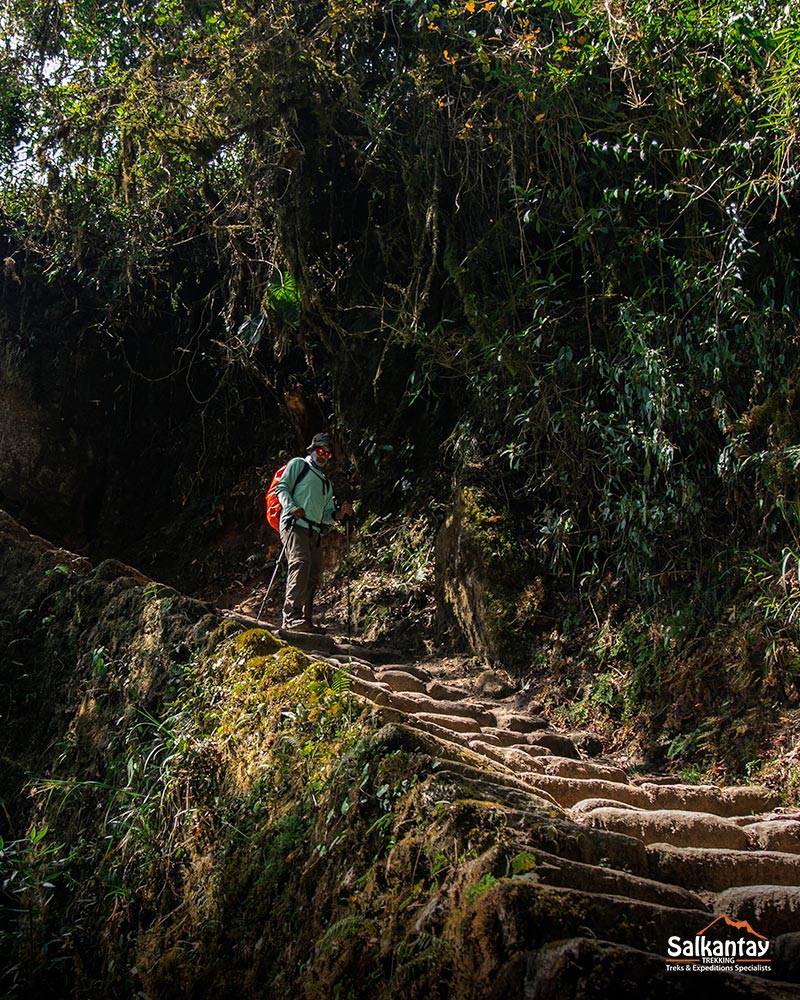
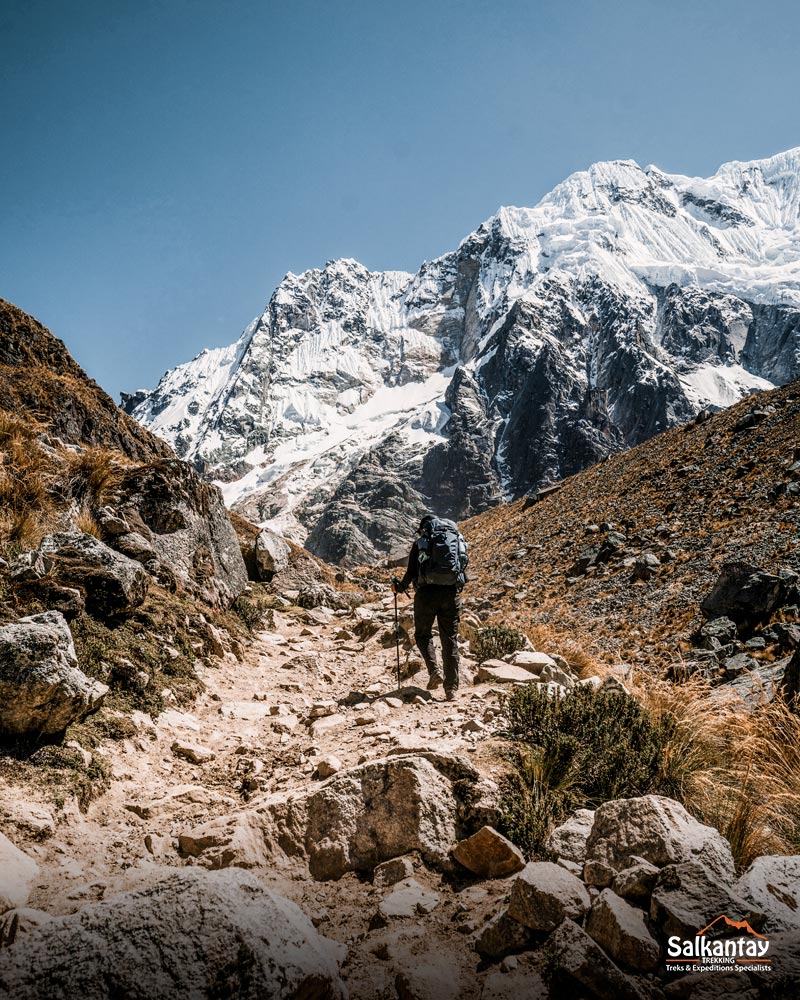
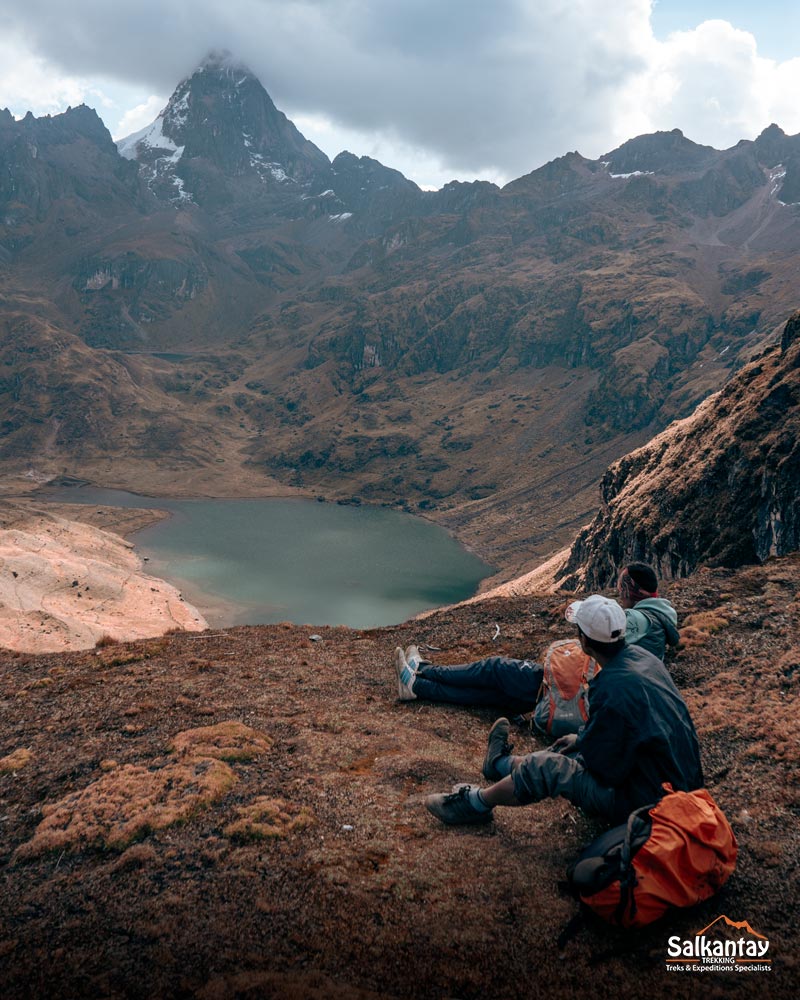
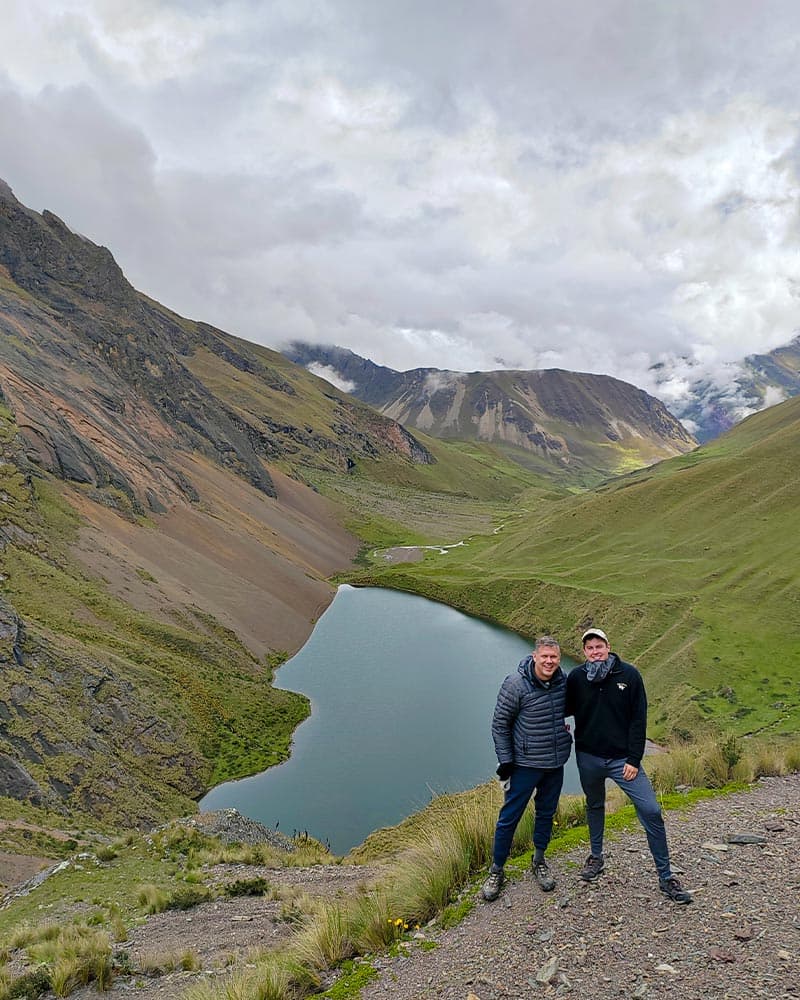
5. The Route is Challenging
The Inca Trail is a moderate to challenging trek through demanding terrain. Along the route, you’ll encounter steep sections, high stone steps, and altitude changes. The trail covers a total of 44 km (27 miles) over 4 days, with elevations ranging from 2,400m (7,874 ft) to 4,215m (13.828 ft) at Warmiwañusca, the highest point. The combination of steep ascents, long descents, and the weather can make the hike a true challenge.
Prepare Properly with These Tips:
- Do Some Physical Preparation: Focus on cardiovascular endurance, strength, and balance exercises, paying special attention to your knees. Being in good physical shape before starting the trek is essential to fully enjoy it. We suggest training before your trip and maintaining a balanced diet to improve your fitness—this will help you make the most of the journey and overcome the challenges of the Inca Trail more easily.
- Acclimate Properly in Cusco: Spend 2 or 3 days in Cusco before the trek to get used to the altitude, and drink plenty of water to avoid altitude sickness. If you experience headaches, dizziness, or nausea, inform your guide and take the necessary precautions during your visit to Cusco.
- Have Good Hiking Gear: Essentials include shoes with good traction and water resistance, a waterproof jacket for the rain, and a backpack with lumbar support. Don’t forget trekking poles! They’ll be your best ally on the trail.
To acclimate better to the altitude, we suggest you try some easier hikes or full-day tours in Cusco to help adapt to the environment. Staying hydrated is crucial for your hike, so drink enough water and avoid dehydration. Remember to listen to your body during training and get enough rest!
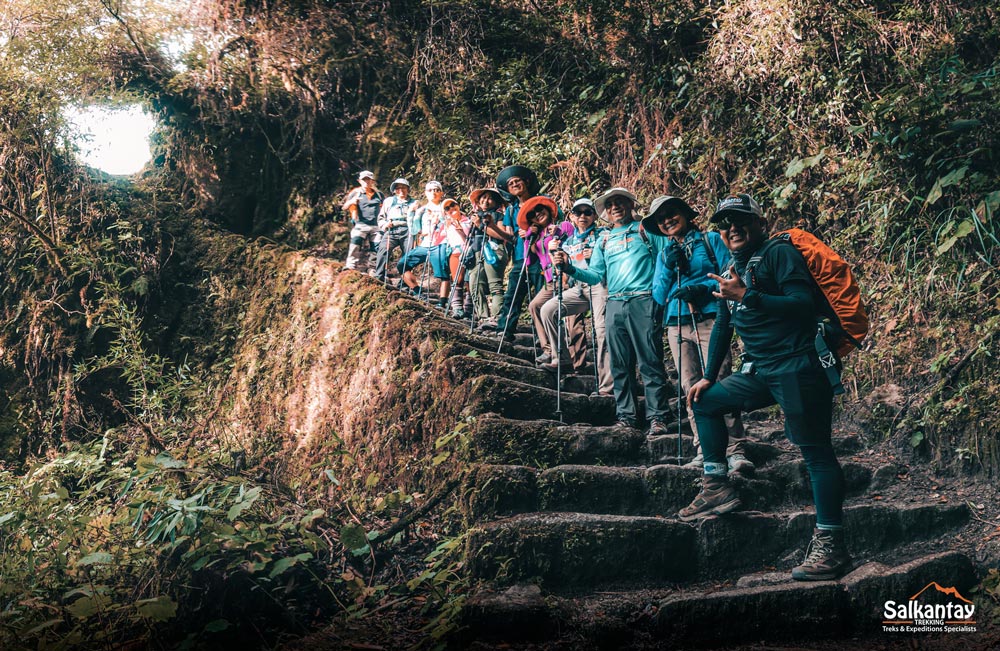
6. The Inca Trail with or without Kids
Visiting Cusco with your family is a fantastic option, as it’s a magical place that will make everyone feel like true explorers. However, it’s important to consider which activities are most suitable when traveling with children.
The Inca Trail requires good physical endurance and the ability to walk long distances on uneven trails. While there’s no official minimum age, it’s not recommended for children under 10 years old, though it always depends on the individual’s experience.
If your family includes very young kids or those not used to hiking, the 4-day Inca Trail might feel a bit long. However, some alternatives could be perfect for them: visiting Machu Picchu by train or doing the 2-day Short Inca Trail could be the ideal choice.
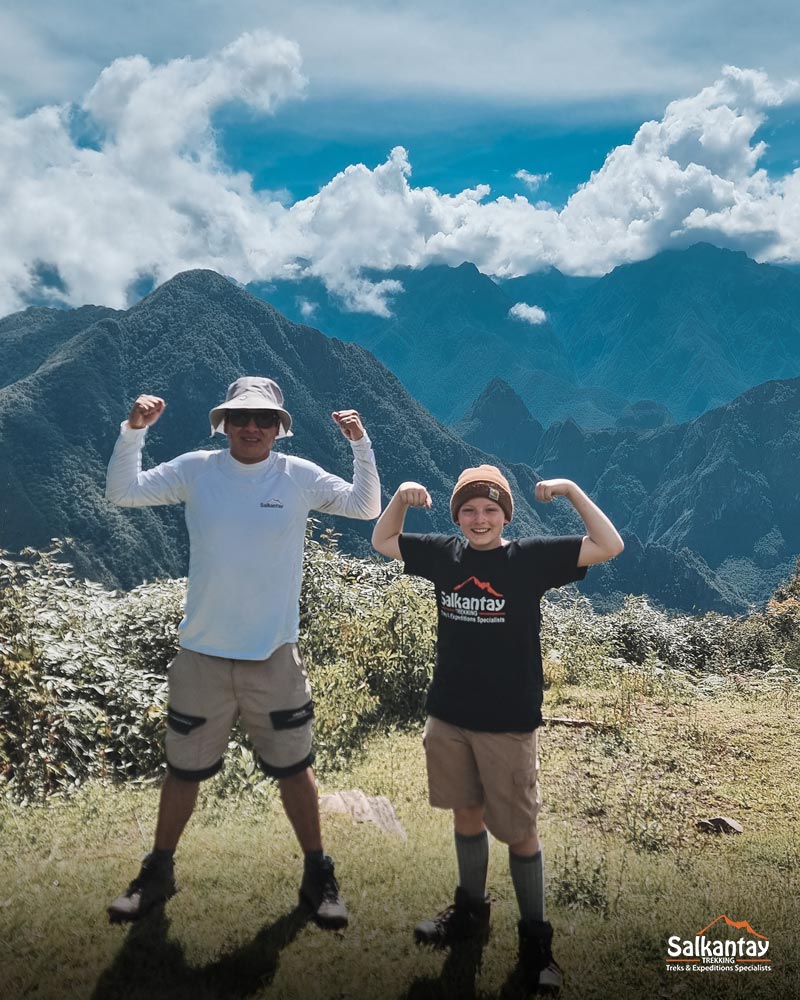
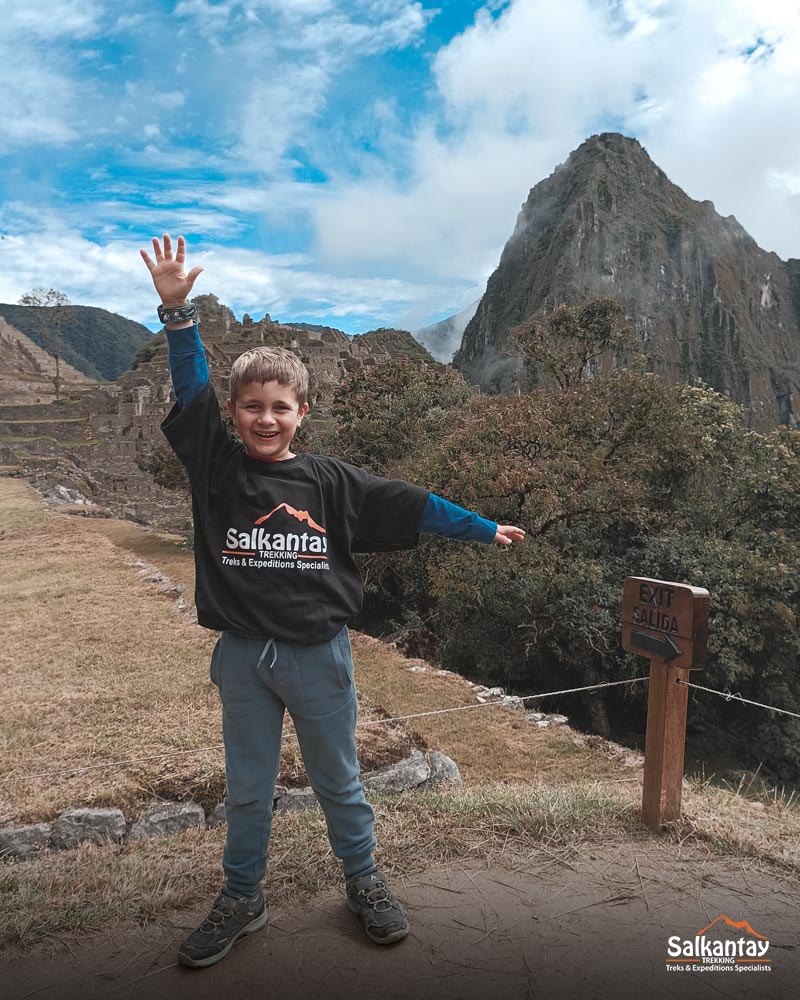
7. Comfort on the Trail
The Inca Trail is a protected route with no urbanization of any kind. It is a true adventure where you will be completely surrounded by nature at all times. For this reason, you must adapt to the conditions of the area.
Along the route, you will rest at campsites equipped with tents provided by the agency. At Salkantay Trekking, we use state-of-the-art professional equipment to ensure you have maximum comfort and rest.
Regarding hygiene facilities on the trail, it is important to note that the campsites have restrooms, but they are rustic in design. Additionally, they are used by many people, which limits their availability. In some sections of the trail, you will have access to a sink with water for freshening up. On the third day of the trek, there are showers available, but keep in mind that they do not have hot water and are limited in number. It is a good idea to bring hygiene wipes to freshen up at any time and hand sanitizer to clean your hands easily.
- IMPORTANT: If you use soap, toothpaste, or any type of personal cleaning product, it must be completely biodegradable to comply with the environmental conservation regulations established by the Peruvian government.
8. Packing List for the Inca Trail
The tropical climate of the trail will also affect your packing, as you need to be prepared for any unexpected weather changes. Additionally, keep in mind that most of your belongings will go in a duffel bag carried by our porters. You’ll have access to this bag at the campsites, and it has a maximum weight of 5 kg (including your sleeping bag).
Take only the essentials with you to avoid carrying too much weight during the trek. It’s important to pack comfortable, durable shoes, rain-appropriate clothing, a waterproof jacket, extra socks, sunscreen, and sunglasses. We also recommend using insect repellent to avoid mosquito bites and bringing a hat to protect yourself from the sun. You can check our Inca Trail packing list to make sure you don’t forget anything!
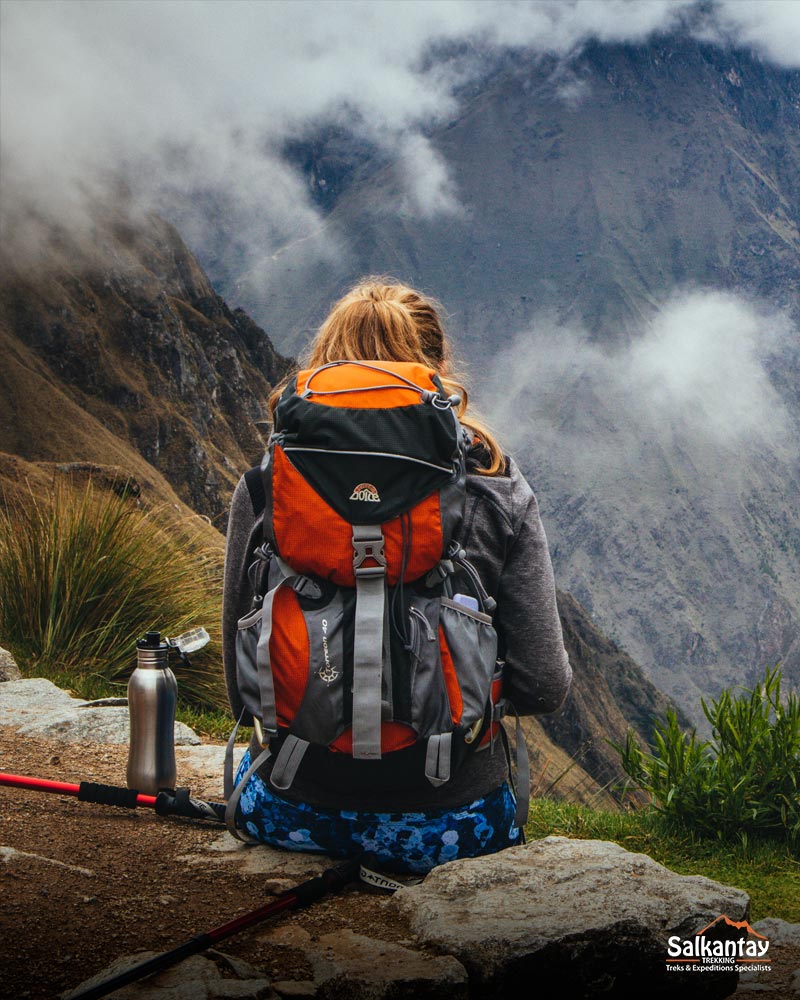
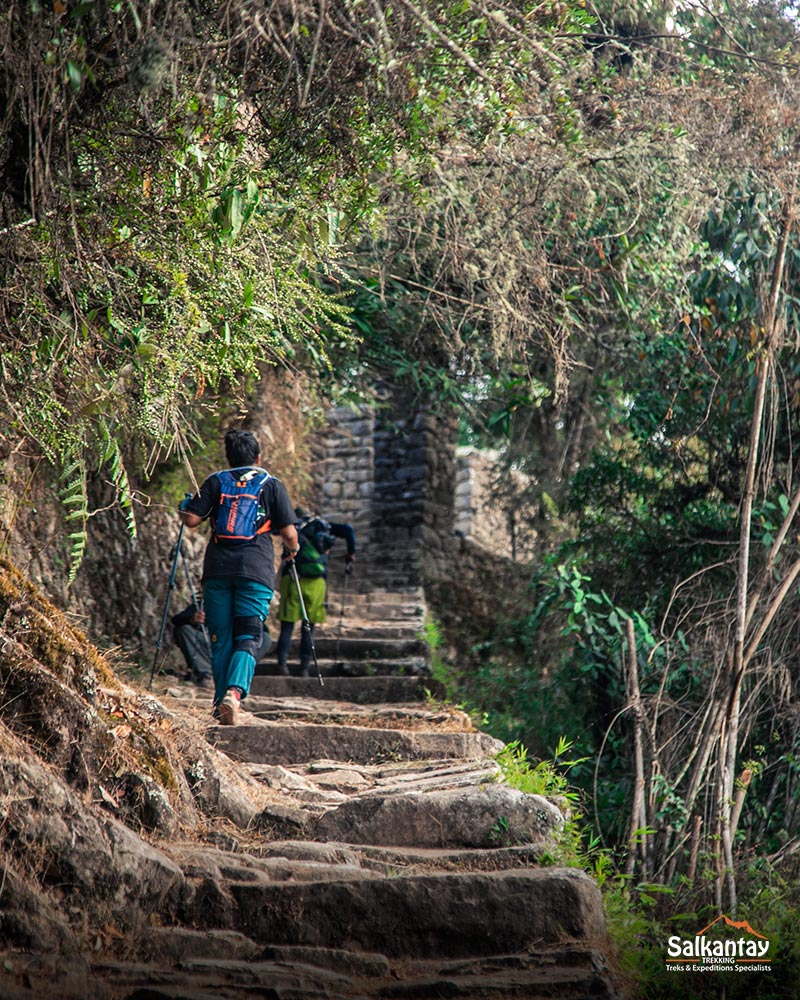
9. Respect the Environment
It’s important to be mindful of our impact on Mother Nature. We encourage you to follow the established rules to keep the environment clean and avoid leaving traces of our presence. If we all work together, this task becomes much easier.
- Carry a bag to collect your waste and dispose of it in authorized places.
- Do not throw trash or pollutants into the grasslands, rivers, or water sources.
- Use a reusable bottle and refill it at designated points.
- Respect the wildlife and flora, avoiding any disturbance to the living beings that inhabit the area.
The Inca Trail passes through protected natural areas and local communities, so we ask you to be respectful of the environment, culture, and traditions that have endured since Incan times. This ensures that the Inca Trail remains a natural and cultural treasure for future generations.
10. The Most Important Thing on the Inca Trail: Enjoy to the Fullest!
Hiking the Inca Trail is a unique experience and should definitely be on your list of things to do in Cusco. Take the time to appreciate the surroundings, connect with nature, and discover the impressive ruins built by the Incas. Thousands of people from all over the world venture along this ancient trail in search of a unique cultural experience, breathtaking landscapes, and a connection with the history of the Inca civilization.
Are you ready to hike the world-famous Inca Trail and reach the majestic Machu Picchu?
The reward for your effort is arriving at Inti Punku (the Sun Gate) on the final day, where you’ll get your first spectacular view of Machu Picchu at sunrise. Unlike those arriving by train, hikers enjoy a more mystical entrance to the citadel. Only they can enter Machu Picchu through this unique and exclusive spot.
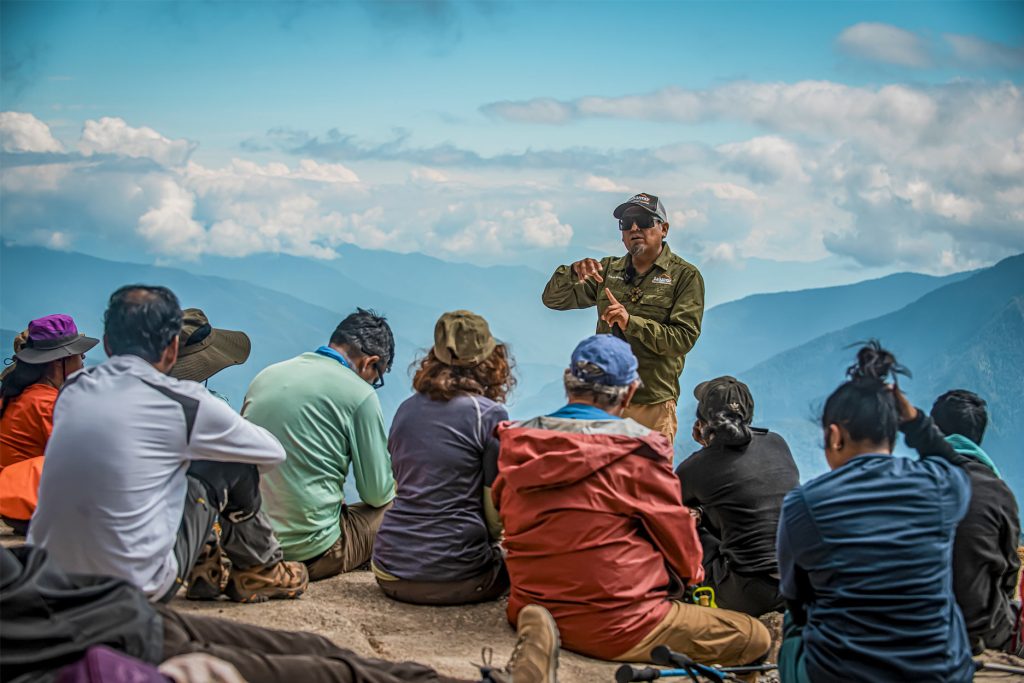
Enjoy the stunning Andean landscapes, immerse yourself in Peru’s incredible culture, and appreciate the diverse flora and fauna of the region.
- If you are looking for an authentic and exciting experience on the Inca Trail to Machu Picchu, we’ll be delighted to help you plan your journey. Book in advance! Plan your trip ahead of time so you don’t miss out on your spot.
The Inca Trail awaits its next explorers. See you at the top!
You May Also Be Interested In:
- Inca Trail: Complete Trekking Guide
- What to Wear for The Inca Trail?
- A Trip Through Time to the Archaeological Sites of the Inca Trail
- Best Environmental Practices on the Inca Trail
- The Best Time to Visit Machu Picchu
- What is the best time to visit Peru?
- How to Acclimate in Cusco: Everything You Need to Know

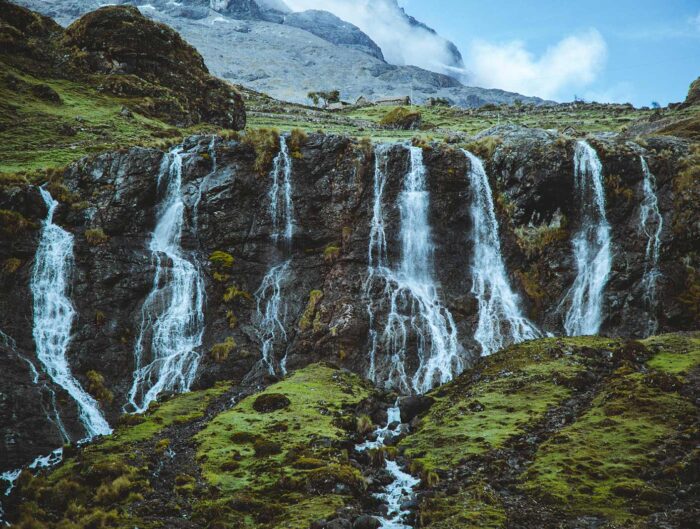
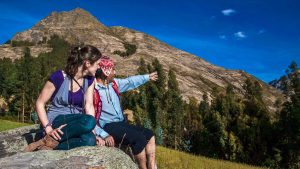

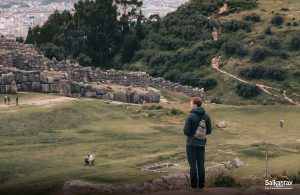
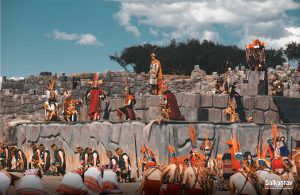
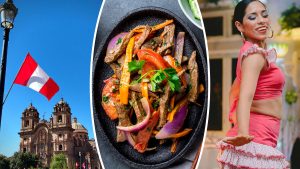



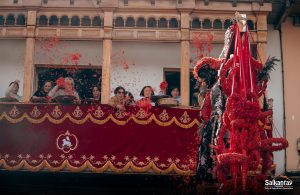
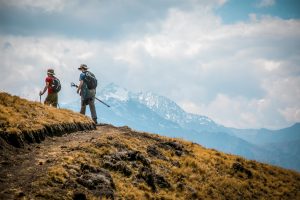
Leave A Reply